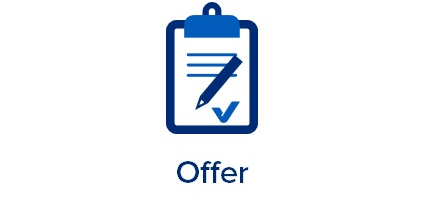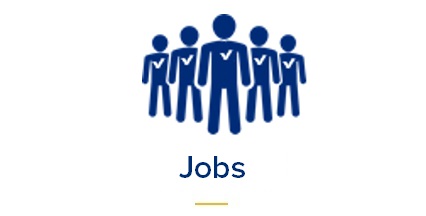
Preventive inspection of lifts
- Does my lift expose users to any risk?
- How can I save costs for wear and tear of the lifts?
- The lift is often defective/malfunctioning, what should I do?
- What are the legal requirements?
As an External Service for Technical Control in the Workplace (EDTC), Vinçotte can conduct inspections described in accordance with the Royal Decree of 9th March 2003, with the help of qualified technical personnel.
A number of obligations have also been imposed on owners/managers:
- The manager shall ensure that the lift provided does not endanger the safety of users under any of the foreseeable conditions of use.
- The manager shall engage an External Service for Technical Control in the Workplace to conduct a risk analysis of the lift in the first instance, this shall be done no later than fifteen years after the initial commissioning of the lift, and thereafter at interim intervals not exceeding fifteen years.
- The operator shall engage a maintenance company to maintain the lift in accordance with the instructions of the manufacturer of the lift. If there are no maintenance instructions, preventive maintenance shall be carried out at least once per year in case of private lifts, and at least twice per year in case of other lifts.
- The manager shall commission an EDTC to conduct preventive inspections of the lift, as per Annex II, subject to the frequency mentioned below:
- 1 if a certified maintenance company carries out the preventive maintenance of the lift, the lift shall be subject to an annual preventive inspection, supplemented by a half yearly inspection.
- 2 in other cases, the lift shall be subject to a preventive inspection every three months.
- 3 private lifts shall be subjected to an annual preventive inspection.
- The manager shall compile a dossier that must be accessible to the concerned parties. This dossier shall at least contain the following information:
- 1. the reports of the risk analyses;
- 2. the documents relating to modernisation programs and their implementation;
- 3. the records of the preventive maintenance conducted during the last 10 years;
- 4. the reports of the preventive inspections conducted during the last 10 years;
- 5. the user manual (instructions for manual and emergency operation);
- 6. the maintenance instructions;
- 7. if applicable: the EC declaration of conformity and the attestation of lift of historical value.
The supervisory authorities provide an electronic database in which these files can be managed. Access to the files is regulated per lift and limited to the persons who have to insert the above-mentioned information in the file, those who have a legal obligation to have the above-mentioned information and the competent authorities.
Use of this database will become mandatory on a date set by the competent minister.
The lifts should be modernised to improve their safety level. The owner/manager shall be responsible to comply with the same.
The process takes place in various stages:
- Phase 1: conduct of a risk analysis by an External Service for Technical Control every 15 years.
- Phase 2: drawing up plans for modernisation with a modernisation company.
- o The modernisation company shall first propose a number of technical solutions to remedy the risks found. The modernisation company shall specify the price and the advantages and disadvantages of the proposed solutions.
- Phase 3: implementation of the planned modernisation operations.
- In case of lifts with a certificate of regularisation from an EDTC, no later than within three years after conducting the risk analysis and at the latest within eighteen years from the previous risk analysis;
- In case of lifts commissioned after 10th May 1998, no later than within three years after conducting the risk analysis and at the latest within 18 years of the previous risk analysis;.
- In case of lifts commissioned between 1st January 1984 and 10th May 1998, no later than 31st December 2014.
- In case of lifts commissioned between 1st January 1958 and 31st March 1984, no later than 31st December 2016.
- In case of lifts commissioned before 1st January 1958, no later than 31st December 2023.
- For attested historical lifts put into service before 1 January 1958: no later than 31 December 2027.
- Phase 4: commissioning an External Service for Technical Control to inspect a part (article 4§2) /the entirety of (article 5§4) the modernisation work.
- The manager shall have the modernisation work inspected by the EDTC that conducted the risk analysis. This service shall issue a regularisation certificate to the manager.
Don’t make the mistake of thinking that your installation is not dangerous because you have not had any accidents (so far)!
Falling into the lift shaft:
A blind person fell four floors down the lift shaft: the hinge door was not locked.
Risk that the cage could entrap a technician:
- A technician was entrapped between the cage of the lift and the shaft ceiling: the emergency stop was not working.
Risk of falling on the floors:
- An elderly person broke his hip while leaving the lift - wrong adjustment of the level, inadequate lighting, no warning in the cage about possible level difference.
More accidents take place with lifts than people generally imagine. Apart from complying with the regulations, due diligence requirements relating to the safety and management aspects can be fulfilled through preventive inspections. They also protect the owner in case of legal consequences if any.
Royal Decree of 9th March 2003 relating to the safety of lifts.
Modification(s):
Royal Decree of 17-03-2005, published in the Official Gazette on 05-04-2005
Royal Decree of 13-05-2005, published in the Official Gazette on 30-05-2005
Royal Decree of 10-12-2012, published in the Official Gazette on 19-12-2012
The Royal Decree is applicable to:
- Existing and new lifts:
- Lifts within working environments
- Lifts within residential environments
- Lifts within private environments
Exceptions:
- Passenger lifts at construction sites, cableways, mine lifts, rack railways, stairlifts, lifts not exceeding a speed of 0.15 m/s, etc.
Norms and standards
Only available in Dutch and French.
Procedure voor de uitvoering van de risicoanalyse van een lift
Als eigenaar zorg ik voor de veiligheid van mijn lift!
Procédure de réalisation de l'analyse de risques d'un ascenseur.
Propriétaire, prenez garde à la sécurité de votre ascenseur!
This service is intended for all companies and all private persons that/who possess a lift.
Including private lifts.
Interested in this solution? Contact us!
Contact
Ask your question directly to the specialised team within your sector.



